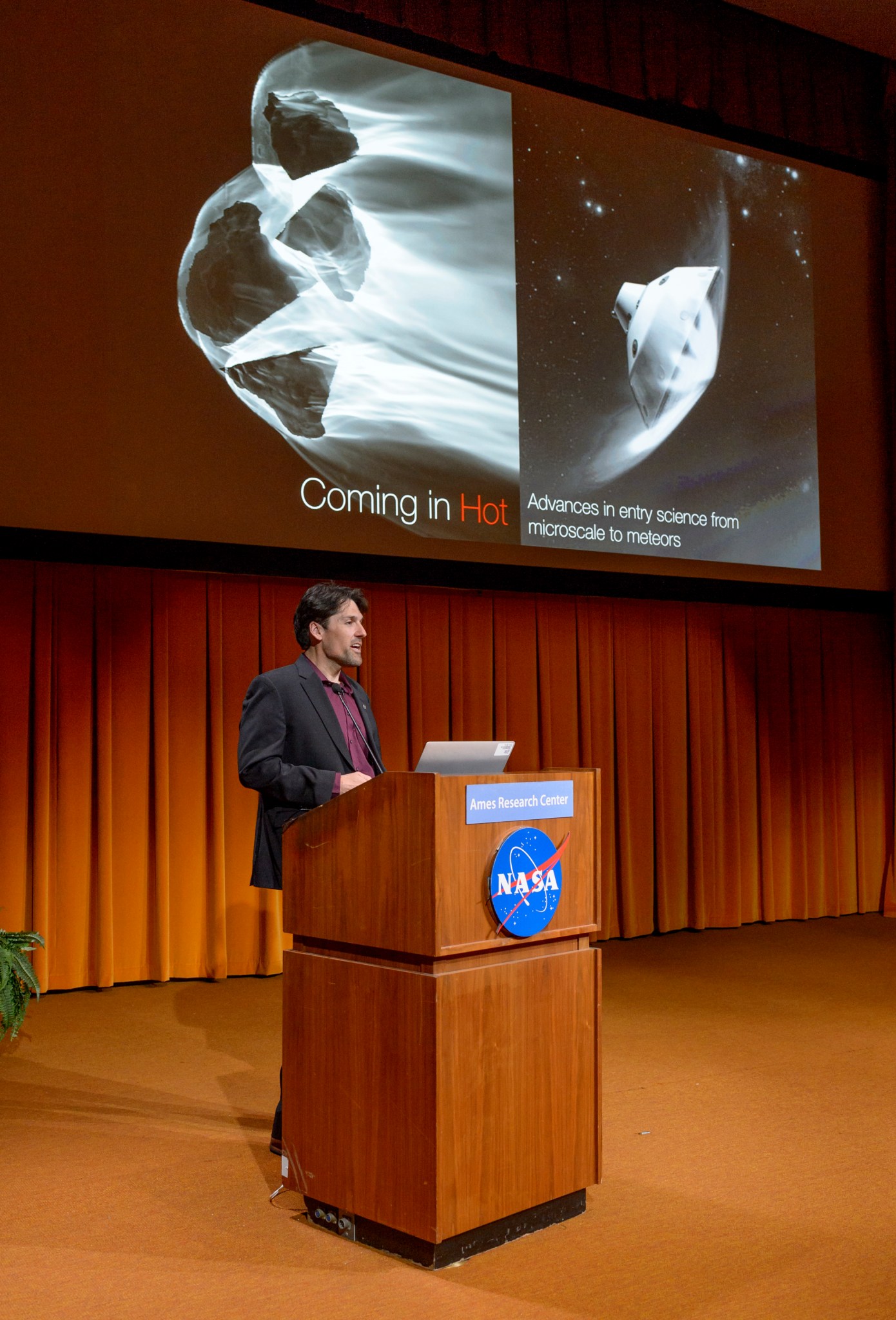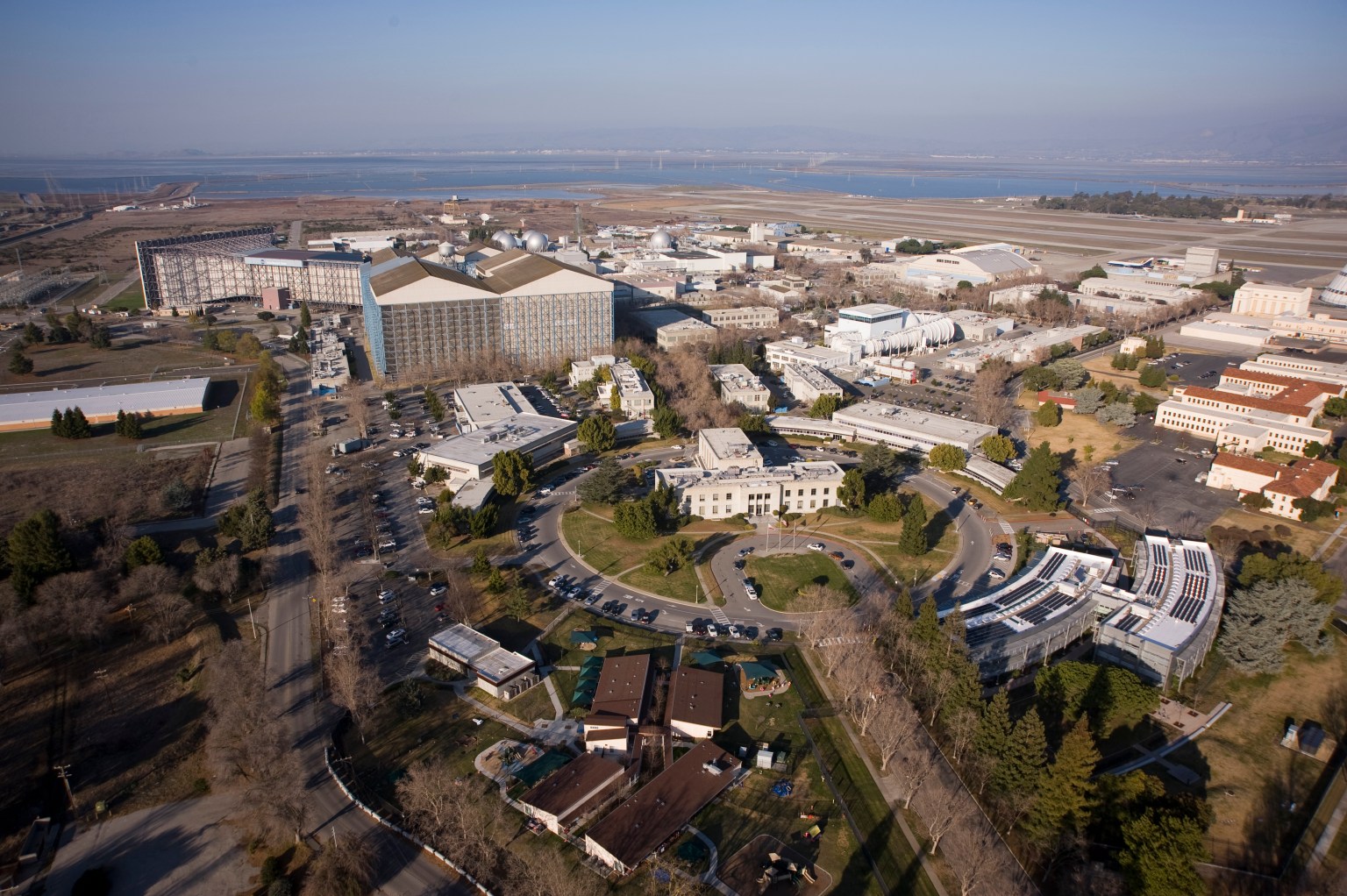Eric Stern – Coming in Hot: Advancements in Entry Modeling from Microscale to Meteors
The Ames Early Career Researcher Award recognizes recipients that demonstrate exceptional scientific or engineering potential for leadership through outstanding research and the integration of research within the context of the mission of their organizations. The 2018 award went Dr. Eric Stern, a research engineer in the Entry Systems and Technology Division.
Understanding controlled and uncontrolled atmospheric entry is a critical component of space exploration. Controlled atmospheric entry is essential for the survival of robotic or crewed missions traversing an atmosphere; while uncontrolled atmospheric entry is important for mission risk reduction and our understanding of meteorite threats. The NASA Ames Research Center Arc Jet facility allows for the investigation of thermal protection systems for atmospheric entry, as well as thermal ablation models of meteors entering our atmosphere. Dr. Stern provided an overview of his research involving new modelling at the microscale level and novel dynamic stability capability.
Abstract:
Advancements in high-fidelity modeling of probe and meteor entry were discussed during this seminar. First, research supported by a NASA Space Technology Research Fellowship demonstrated the feasibility of modeling the physics of spacecraft thermal protection system (TPS) materials at the microscale to gain insight underlying phenomena which drive performance and inform design. Second, a capability for simulating the dynamic stability of entry probes has been developed. While computational fluid dynamics (CFD) has become ubiquitous in predicting the aerodynamics of spacecraft, dynamic stability is still exclusively characterized through wind tunnel and ballistic range experiments. This new capability, by coupling six degree-of-freedom dynamics to a high-fidelity CFD solver capable of capturing the relevant flow physics, provides a means for determining difficult-to-obtain dynamic stability coefficients for entry probes, and complement traditional ground testing methods. Finally, a broad research initiative to leverage Ames’s core competency in entry modeling to improve the assessment of the risk posed by asteroids is described. Arc jet experiments performed on meteorites have yielded first-of-its-kind views into the physics of meteoroid ablation. Additionally, aerothermodynamic simulations of meteor entry have provided insight into the radiation produced by the 1908 Tunguska impact event; the largest asteroid event in recorded history.
Biography:
Eric Stern is a research engineer in the Entry Systems and Technology division at NASA Ames Research Center. He graduated from the University of Minnesota with a Ph.D. in Aerospace Engineering in 2015, where his research in space thermal protection system (TPS) modeling was supported through a NASA Space Technology Research Fellowship (NSTRF). He was hired as a contractor within the Thermal Protection Materials branch at NASA Ames in 2014, and then converted to civil service in 2015. As a researcher at NASA, Eric has led several efforts spanning the breadth of entry modeling topics. He serves as PI and technical lead for the Icarus project, which is developing the next-generation TPS modeling and design tool. As technical lead for the Free-flight CFD project under the Space Technology Research Directorate’s (STMD) Game Changing Development (GCD) program, he has led development of a capability to predict dynamic stability of entry probes. Finally, as entry modeling lead for NASA’s Asteroid Threat Assessment Project (ATAP), he leads a team of researchers improving our understanding and ability to predict the consequences of asteroid impacts. These research efforts have spawned several international and inter-agency collaborations, including with DLR (German Space Agency), Lawrence Livermore National Laboratory (LLNL), and the Missile Defense Agency (MDA). Work performed in these areas has led to nine peer-reviewed publications, and several more in preparation.
































